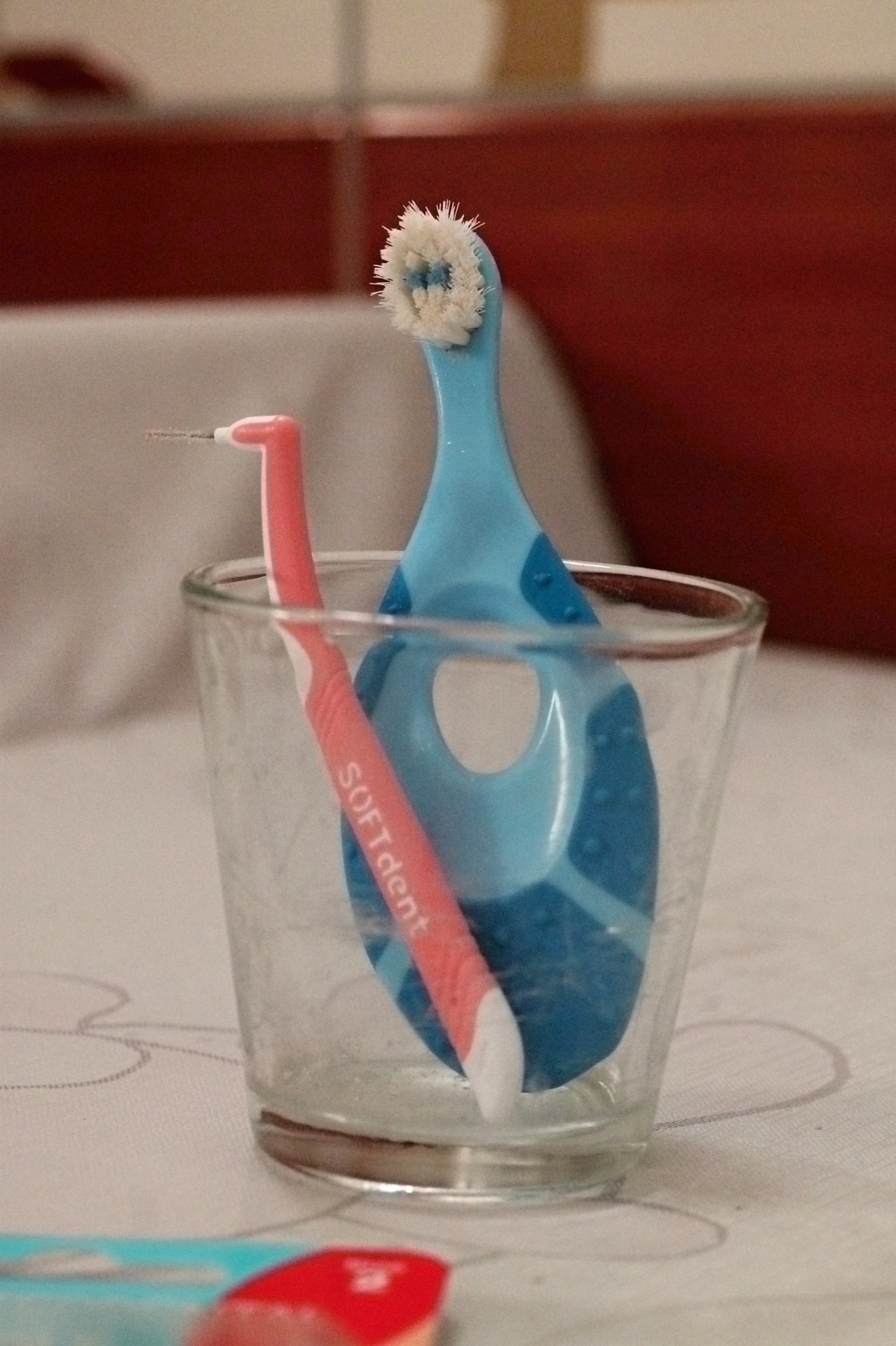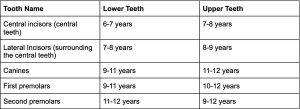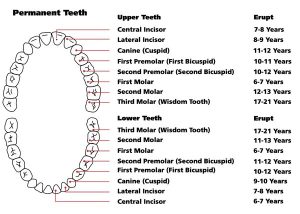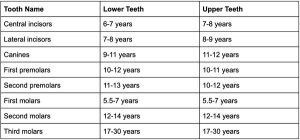
The process of your child’s tooth suddenly getting wobbly and one day falling while they eat an apple, soon to be replaced by a brand new, sparkling white tooth, doesn’t always happen as expected. What if your child is the last to lose their teeth in their class? What if their teeth are simply not growing back? What about teeth that look yellow or that have bumpy edges?
If your five-and-a-half kid comes to you complaining that their mouth hurts, but none of their baby teeth are wobbly, this probably means that their ‘first molars’ are coming through. These 4 teeth are not replacing any previous teeth, but they’re simply the first adult teeth that will come through. These are permanent and should be taken care of extra well, as they will last a lifetime.
Beyond being an exciting, or slightly uncomfortable experience for your child, these first molars coming through are the sign of something more important.
Once they come through, your child can expect to start losing their baby teeth and grow adult ones. Your child’s first baby tooth is likely to fall out around when they’re around 6-7 years old and will continue until your child is around 11-13 years old. However, some children begin as early as 4, or as late as 7.
Your child’s teeth will most likely fall out in the same order they erupted or appeared in the mouth. The front 2 bottom ones (lower central incisors) are usually the first to fall out, followed by the top 2 front ones (upper central incisors). This is followed by the other teeth surrounding the top and bottom middle teeth.
Here is a table explaining when your child can expect to lose their teeth:

Statistics provided by the American Dental Association
A diagram to show you what tooth is being referred to:

Source provided by the American Dental Association
The ranges for your child’s teeth to fall out can vary. Most of the time, if your child’s teeth are suddenly wobbly, even from the age of 4, there is no need to worry. It is, however, important to be aware of premature tooth loss.
Premature tooth loss can be caused by an accident or tooth decay, so if any of these happen to your child, consult your child’s dentist right away to check if a space maintainer is needed. Space maintainers help preserve the space for the adult tooth to prevent overcrowding in the mouth.
The number 1 lesson is that if you’re concerned about your child’s teeth, consult your child’s dentist to check there are no underlying problems and for peace of mind.

Using your child’s classmates can be a good indicator of whether they are losing their teeth at the right time, whether they’re slightly early than the majority or slightly late. If your child is the first or last in their class by far to lose their teeth, consider the following questions:
The teeth are getting wobbly, falling out, and the tooth fairy may be coming to visit at night. Now your child has some empty gaps in their mouth, when can you expect to see the adult teeth appear?
The first central incisors that fell out are typically the first ones that are replaced your child is around 6-7 years old. It can take as long as 6 months for an adult tooth to appear in the place of the milk tooth, but sometimes it can take longer if there isn’t enough space for the tooth to grow into.
Your child will have adult teeth growing right until they are even 30 years old, as the third molars (also known as the wisdom teeth) can appear any time from the age of 17 to 30 years old.
Here’s a table explaining when permanent teeth should appear:

Statistics provided by the American Dental Association
Should you be concerned if your child’s teeth are falling out, but the replacement teeth are still not showing any sign even after 6 months of waiting? Not necessarily.
Each child will lose and grow back their teeth in their own time, and sometimes it can take many months for a tooth to grow back despite some of their classmates proudly flashing their new adult teeth. However, there are some situations when it is best to consult your child’s dentist, as it may signal another problem. For example:
This is not uncommon.
When a tooth erupts, it pushes against the roots of the milk tooth that it is going to replace. This causes the roots of the milk tooth to dissolve, making the baby tooth come loose and fall out.
Sometimes, this doesn’t work as it should, and the tooth does not properly push against the tooth’s roots. This can result in 2 rows of both the baby and adult teeth being produced.
Parents, don’t worry. Treatment is unlikely to be needed and the baby tooth will fall out eventually on its own. But sometimes, a dentist may recommend simply extracting the tooth.
Marmelons. This is the fancy name of those bumpy edges that may appear on your kids’ brand front teeth. The good news is that they are completely normal and are not dangerous or harmful in the slightest. They will eventually smooth out over time from chewing. However, if your kid is self-conscious about them, your dentist may offer to smooth them to remove the bumps.
While it is crucial to take the utmost care of your kid’s brand new adult teeth, if the new teeth appear with a slightly darker or yellow tinge, this is completely normal and isn’t down to poor brushing.
The color change is primarily caused by an extremely hard, translucent material called dentin. Permanent adult teeth have more dentin in them, which is typically a yellowish color, and the enamel on new teeth is slightly translucent, so the yellow color may show through.
Furthermore, you may be comparing them with the baby teeth that are still in your child’s mouth, which are naturally different colors. Over time, the permanent teeth lighten and will appear white again.

Despite the new adult teeth appearing naturally yellow at first, it’s incredibly important to take care of your kids’ teeth from the beginning to prevent further discoloration. Here are some reasons when adult teeth may become discolored:
Making sure you brush your teeth twice a day, flossing at least once a day, and limiting the number of sugary food and drinks is important to maintaining dental hygiene. Also, having regular dental checkups can help you understand where you may be brushing wrong, or to get advice on discolored teeth
Once your child’s first molars come through at the age of 4-5 years old, they can expect to start losing their baby teeth and growing new ones. Your child’s first baby tooth is likely to fall out around when they’re around 6-7 years old and will continue until your child is around 11-13 years old. However, some children begin as early as 4, or as late as 7.
Your child can start to lose their teeth at the age of 4. Premature tooth loss should be consulted with your child’s dentist right away.
The first central incisors that fell out are typically the first ones that are replaced your child is around 6-7 years old. It can take as long as 6 months for an adult tooth to appear in the place of the milk tooth, but sometimes it can take longer if there isn’t enough space for the tooth to grow into.
Treatment is unlikely to be needed and the baby tooth will fall out eventually on its own. But sometimes, a dentist may recommend simply extracting the tooth.
If the new teeth appear with a slightly darker or yellow tinge, this is completely normal and isn’t down to poor brushing.